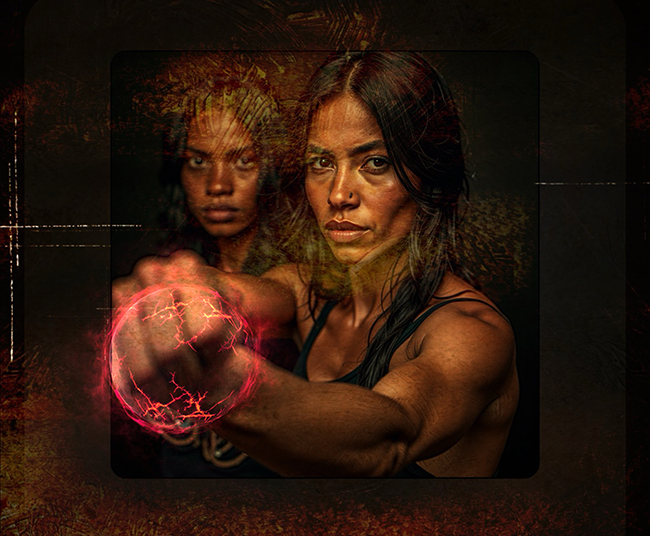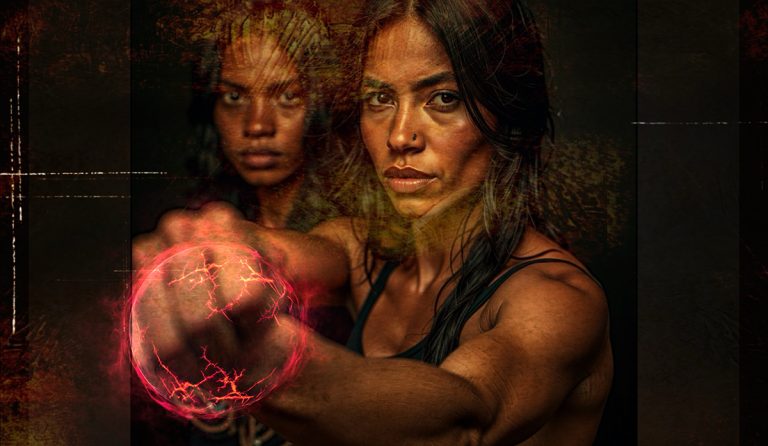Camille Ross, an American photographer born in 1964 in San Francisco, California, grew up straddling two vastly different worlds: the radical culture of Berkeley in the 1970s and the rural life of Mississippi. This blend of contrasting environments, alongside her biracial heritage and Cherokee ancestry, has shaped her work as an artist and her understanding of societal dynamics. Ross’s photography often centers on themes of marginalization, cultural identity, and the power dynamics that govern the way we see and represent people, particularly women of color.

Her latest project, “The Women,” pushes boundaries by offering a new perspective on women from historically oppressed communities, specifically Native American and African American women. The project challenges ingrained stereotypes and presents these women in ways that reflect empowerment, joy, and agency, defying the narratives that have long confined them to representations of poverty and disadvantage.
In her essay accompanying “The Women,” Camille Ross discusses the origins of her work and the societal need for it. She highlights how women of color, particularly Native American and African American women, have been portrayed throughout American history. This portrayal often centers on themes of poverty, disadvantage, and lack of agency—stereotypes deeply ingrained in the visual representations of these women. Ross explains that these views are perpetuated not just by a cultural misunderstanding but by intentional systemic oppression, further cemented by media and political figures.

Ross’s series seeks to upend these tropes. By placing Native American and African American women in positions of power, opulence, and freedom, she aims to reframe how these women are viewed. In her photographs, they are not seen as victims or disadvantaged individuals but as powerful, autonomous figures who control their own narratives. This radical shift in representation is intended to challenge viewers’ perceptions and reveal the flawed, outdated stereotypes that still linger in American society.
Central to Ross’s work is the recognition of the long history of oppression these women have endured. From the early days of slavery to contemporary issues like police brutality and the neglect of missing and murdered Indigenous women, Ross weaves these painful realities into her work. In her essay, she references both the Black Lives Matter movement and the murder of Breonna Taylor, emphasizing how the media and society often ignore the violence inflicted upon women of color.

Ross also highlights the tragic epidemic of missing and murdered Indigenous women and children, an issue that remains largely unaddressed in the broader American consciousness. Her work aims to bring attention to this epidemic, to the staggering rates at which Native American women are abducted, abused, and murdered, and how their stories are often erased from the narrative of American justice.
What makes “The Women” so revolutionary is the way Ross flips traditional power dynamics on their head. She places these women in scenarios typically reserved for those of privilege—surfing, sailing, skiing, and even fencing. The women in her photographs are seen riding waves, participating in archery, and engaging in leisure activities that signify freedom and control, all traditionally depicted as reserved for wealthy, White individuals.
One of the series features African American women on safari in Africa, an ironic nod to their historical connection to the continent, where they are portrayed as adventurers reclaiming their land and taming lions, a direct inversion of colonialist narratives. These images, full of irony and historical references, invite viewers to reconsider their assumptions and challenge the deeply embedded stereotypes that have long distorted the portrayal of women of color in American culture.
Ross discusses how her work plays with the duality of the denoted and connoted meaning, referencing Roland Barthes’ ideas of text and subtext. The women in her photographs are not just doing activities but are also embodying subversive roles. The irony within the series is rich, with Ross purposefully situating women of color in activities typically denied to them by societal stereotypes.
By capturing them in moments of joy, freedom, and power, Ross defies the historical visual narrative that confines them to poverty and hardship. These images reflect not only an empowered present but also the potential of a future where these women take control of their stories, their bodies, and their lives.
Another key aspect of Ross’s work is her focus on older women of color. In a society that often diminishes the visibility and value of aging women, Ross makes a point to feature women in their 70s, showing them as active, joyful, and fully in control of their lives. This is a direct challenge to ageism and the rampant cultural invisibility of older women, particularly women of color.
In her series, Ross portrays aging women as beautiful, accomplished, and powerful, turning the notion of aging into a celebration of life’s journey rather than a narrative of decline. This portrayal is particularly significant in a culture obsessed with youth and beauty, offering a much-needed counter-narrative that values the wisdom and strength that come with age.
“The Women” is more than just a photographic series; it is a statement on the power of representation. Camille Ross invites viewers to reconsider the ways women of color are depicted and encourages a new narrative—one that acknowledges the strength, autonomy, and joy that these women embody. Through her work, Ross provides a counter-narrative to the stereotypes that have long dominated the portrayal of Native American and African American women, creating space for them to be seen in all their complexity, resilience, and power.

